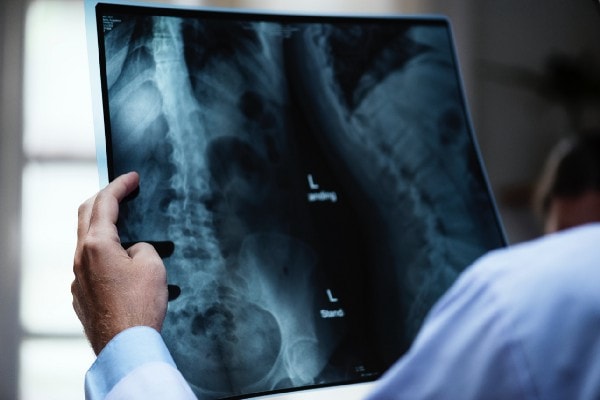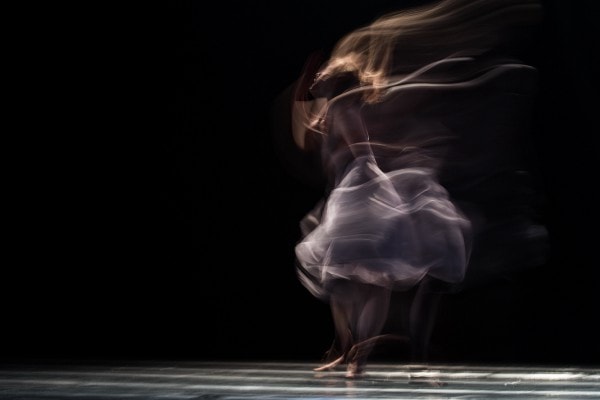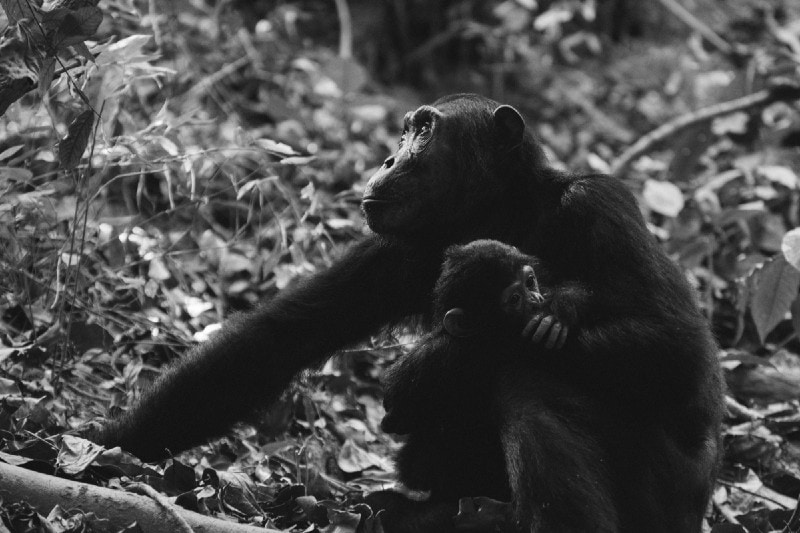How you move matters in more ways than you think
Title adapted from William S. Burroughs in his gutsy novel Junky, “When you stop learning you start dying”. Which I also believe, wholeheartedly.
“Break a hip and die from pneumonia…”
I’m not exactly sure where I heard this but I believe it was from an MD stating that the elderly population (defined by > 65 years old) has a tendency to die in hospitals from complications originating in something as simple as a fall. I can only say “as simple as a fall” because there is virtually no instance of death from breaking bones in younger ages.

Hearing this statement, one would think that the hip is a vital organ to live.
Well…not by standard definition.
You should, in theory, be totally fine from breaking a hip. Modern medicine is fantastic at repairing bone in acute injuries. The hip does not create any vital life-sustaining process like the visceral organs…or does it.
Some would say it does hold the key to the most vital component of life. Movement. And I just may be here to persuade you of that statement.
Without a healthy hip…humans can’t create locomotion to thrive in the world around us. Once a person loses that function, it seems the body naturally begins to shut down. As if it knows that it has no chance to survive in a world that evolutionarily thrives on movement. That turn from independence to dependence is what may lead to the death of hundreds of thousands of elders, every year.
To support this theory, a 2010 meta-analysis following research on geriatric hip surgeries and their mortality rates within the first year, found that an average of 21% of patients that broke a hip died within the first year, post-surgery. This means, on average, one out of every 5 broken hips in the later stage of our life dies within 1 year. In reality, it usually happens in the first 6 to 8 months from complications derived from infections like pneumonia. And on the dependence statement…it turns out that in assisted care populations, the statistics grew even larger where a study showed upwards of 58% mortality within 1 year.
We can easily correlate the break and ensuing surgery to the possibility of infection, but it turns out that another large factor in obtaining the infection is correlated to the psyche which in turn affects the quality of the human immune system. Therefore raising the chances of contracting said infection.
So when you can’t move, you innately lose a psychological edge against nature, an ability to escape probable trouble. And yes, quite literally, you are unable to move away from death.
Therefore…how you move matters, and the further we look into it, its a matter of life and death.

Movement, as defined by Wikipedia, is an act of changing physical location or position. It’s a literal and functional term that is often a gauge of our vitality. Evolutionary science shows that the more capable we are to move, the more capacity we have to execute survival tasks, like get food, travel to avoid bad things or move towards good things, to build and create, etc…the most important characteristics to sustaining life all depend on the ability to move for some specific reason at a specific time.
But a movement is much more than just locomotion and physical action. It has deeper roots acting as the primary driver of human existence and the way we currently interact as physical, emotional, and psychological beings.
From the very beginning, all the way back to the origin of life, the organisms that were more apt to be able to explore their environment further had more access to advantageous resources. Further, they were able to move from place to place should any mishap take place. They were more likely to survive. Locomotion and our ability to move has dominated the evolution of every aspect of life, from physical to mental to cultural…and continues to do so.
The way we are designed is no accident. Whether you want to argue for the theory of Evolution or Genesis, there is no argument over whether the human species is continuously evolving over the course of time. Both theories admit the genius in how we are specifically and purposefully able to function.
Looking at the design of the human body, we can see movement as a central priority of our architecture. For instance, possibly the best example is the way that our nervous system is created, where the brain is located at the beginning and the central nervous system moves down into a central cord where nerves branch off to appendages. This is specifically designed for movement as a first priority. This design expertly allows movement to be executed most effectively and efficiently. Only secondarily does the nervous system create a purpose for mental byproducts such as thoughts, emotions, and creativity.
The Movement Rule of 2 (movement must be efficient and effective) has been the catalyst for human development over our entire existence. Human anatomy and its function have shifted over time purely because of this rule…and we are still evolving because of it today. Our body will always find the path of least resistance to execute our specific tasks within our chronic environments.
Remember this rule, it is vitally important to understand how you move and improve movement. Where we live, how we live, who we live with shapes not just our lives, but our bones and tissues and even our organs to develop better ways of living and surviving at the highest quality based on need. This amazingly beautiful phenomenon has been the very reason that we continue to exist but also is the primary driver into our modern psychological and physical ailments built over hundreds of thousands if not hundreds of millions of years (depending on your belief).
Here is the evolutionary story, in a nutshell…
There is strong evidence that humans evolved from primates where our anatomy was very different from today. Walking on all fours, primarily, caused our body to shape itself to the effectiveness of that style of locomotion. Spending time bent forward on our hands meant the spine had a very little resemblance of current curves and the pelvic girdle was shaped differently for stability in this position. Our hands were used more like our feet during locomotion and the knuckles were our main contact with the ground. Our brains were small and our thoughts were fairly simple but still focused towards survival at all cost.

The primate half-walking evolved into the Hominid, who was able to walk straight and upright. Which, in turn, involved an evolution in the morphology of the waist for upright position, therefore the pelvis became more shallow and we developed different adaptations such as the gluteus musculature (thank you evolution).
Our ability to be upright gave us great advantages. Outside of obviously being able to see further, the hands were freed up to make tools, and being upright give us more effective cooling capability. But most importantly, the upright position developed the effective and efficient walking gait. The human walk, where the weight is supported by one leg most of the time, completely changed the anatomy of our feet, spine, hips, and hands and allowed us to save 4x more energy than our previous ancestral movement.
During this Paleolithic period, physical activity was a must, in order to survive. Now, we continued to evolve into what is known as Neanderthal and the adaptation to walking created potentially the most impactful evolution known to man. We moved from consuming nuts and berries to eating a high amount of animal meat through the development of hunting and fire.
This changed everything, albeit very energy consuming, this skill of hunting changed our anatomical structure further by redeveloping our digestive system and giving more fuel to re-engineering our brain to be much bigger. We were strong, fast, smart and necessarily consuming high calories (maybe upward of 7,000 calories) due to the massive amount of movement for survival.
Finally, evolution pushed us into what we know as Homo Sapiens, where we realized that the terrain and environment were harsh and it was possible to find a more suitable place to create a more effective livelihood. So we began a more nomadic lifestyle. With this, our limbs became longer and hands more supple and we eventually understood that fertile ground meant that we could grow food instead of use so much energy to hunt…in comes the farm. This was the beginning of the devolving movement from a necessity to a choice. And thus, out of the rule of efficiency, a sedentary life was introduced as an option.
At this point, there began a cultural shift. One that furthered the likelihood of human survival and the ability to procreate. Communities grew larger, people began to live longer, and people died less often. Therefore, for many humans, a devolution of movement occurred with the advent of civilizations and communities where we lost the element of “movement as a need” but began to create “movement for fun”.
Exercise and sport were created to fill the void of movement as an innate and necessary survival instinct. As early as in Mesopotamia (in 4,000 BC) sports competitions like archery, boxing, swimming, fencing, wrestling, and rowing were known to exist. In ancient Egypt, human movement took a turn towards strength development in the likes of weightlifting. Furthermore, In Greece (146 AC), the nobles had a link to exercise and physical activity, developing the concept of the athlete and inventing the Olympic Games as well as physical education in practice for war.
Our anatomy was no longer concerned about how to move for food consumption and predator avoidance. Now our body was being developed for more modern and arguably less necessary aspects of human survival. More communal, more emotional, nobler (unless you were not a noble), more roles divided…
This was an abrupt change which certainly had an effect on the way that our body developed. Of course, we began to build stronger and more powerful bodies. We continued to live longer and find ways to combat the frequency of disease and “natural” occurrences of death. But with every yin, there exists a yang. We began to develop a whole slew of different problems which is neither bad nor good…but it is important to be aware that it does exist in order to continue to evolve.
To examine this point further, I’d like to bring attention to a concept created by evolutionary biologists that highlights what they call the “tetra of modernity” as a caveat of our current movement progress. The notion is composed of 4 modern differences that exist in contrast to our ancestral past.
- Hyposomnia — too little sleep. The primitive man slept for 10 to 11 hours per day. Today, we are begging people to get 8.
- Hyperstress — an overload of psychological and emotional stresses. Our ancestors were not exempt from stress but it was due to the presence or lack of food. Our bodies evolved to deal with this very effectively, even to the point that some health professionals today will advise fasting to replicate the stress of this era and the positive reactions that our body undergoes during these type of stress. Psychological and emotional stresses have a profoundly different effect on the body.
- Hypercaloric — an overabundance of calories from food and drink. Yes, the Neanderthal period may have had a large calorie diet but only due to the amount of movement being performed for survival. We have flipped the triangle to have decreased (drastically) the amount of movement and still maintained the high-calorie consumption with less quality. This sends our body and its natural functions into a tailspin.
- Hypokinesia — Lack of movement. I would add the lack of purposeful movement based on our evolutionary anatomical design. There are arguments of whether exercise is even detrimental (albeit much less) to our survival.
So we move less, sleep less, eat more, and have more psychological stress…are we doomed?!?!
Not exactly. The solution may be as simple as reversing these 4 details. However, the execution of this proposed change is a bit more complicated. Sleeping more, developing stress management skills, eating less and higher quality foods, and move more like our bodies were evolutionarily designed sounds as complex at is actually is. Especially when we consider that modern life does not support this development, even in the Health and Fitness Industry…especially, in the Health and Fitness industry.
In the next part of this 2-part series, I would like to dive deep into modern times and the advent of exercise as a movement. Whether exercise is actually developing our health as we believe (or hope) it is and what changes it has made from our natural design. Is moving on machines indoors without designed purpose affecting our mental and disease state? Are we better off now from where we were in the ancestral past? Is exercise really beneficial?
Until Then,
Ask tough questions and consider all options.

